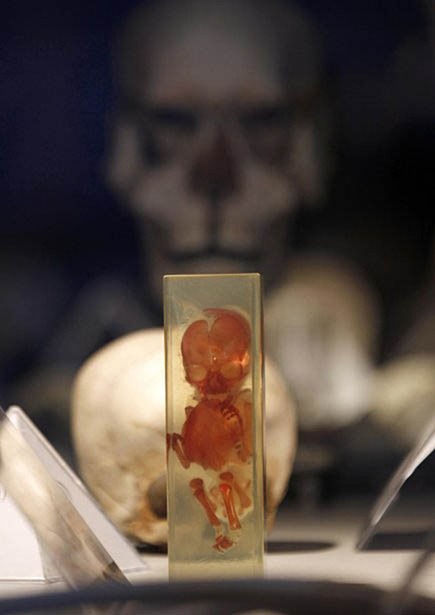The Body World exhibitions are one of kind exhibitions using an extraordinary process called Plastination invented by the controversial German anatomist Dr Gunther von Hagens.
Plastination is a technique of preserving bodies or body parts by replacing the water and fat components by certain plastics, thereby yielding specimens that can be touched, do not smell or decay, and even retain most properties of the original sample. Plastination was invented in 1977, but it was not until the early 90s that the equipment was developed to make it possible to plastinate whole body specimens.
Photo:Reuters
Dr von Hagens plastinated animals are now on display at an exhibition in Rome. The exhibitions shows the whole bodies plastinated in lifelike poses and dissected to show various structures and systems of human anatomy allowing visitors to see and better understand about anatomy, physiology, and health by viewing real human bodies. The exhibitions also shows the long-term impact of diseases, the effects of tobacco consumption and the mechanics of artificial supports such as knees and hips. Each exhibition features more than 200 real human specimens, including whole-body plastinates, individual organs, organ configurations and transparent body slices with each specimen taking up to 1,500 man hours to prepare.
Previously: Body World Exhibition in Germany.






















Comments
Post a Comment